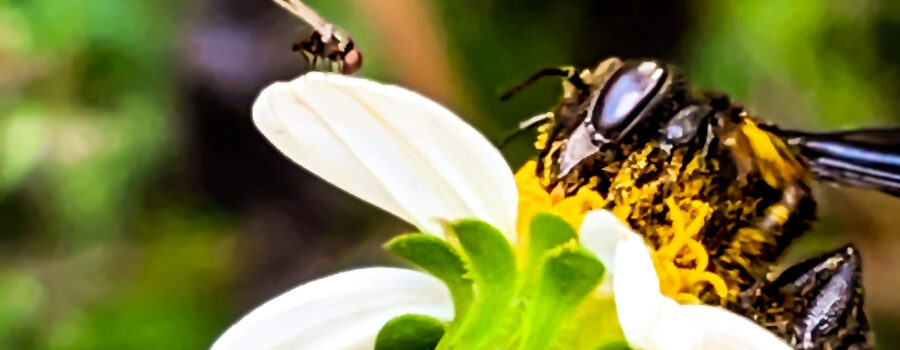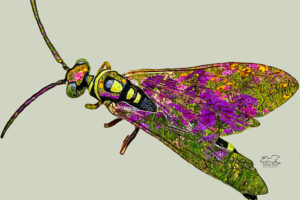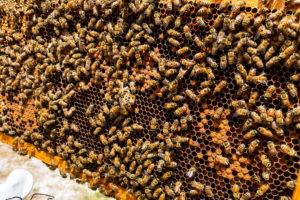The Carpenter-mimic Leafcutter Bees are Special Pollinators

We are nearing the end of fall, and all our wildlife is taking advantage of getting as much food as possible before cooler weather arrives. Fall wildflowers and grasses are fading and turning to seed and even the insect world is stocking up on food wherever they can. When I came home from work one afternoon last week what was left of the blackjack (Bidens pilosa) flowers were literally buzzing with bees. There were several different types, but the ones making most of the noise were carpenter-mimic leafcutter bees (Megachile xylocopoides). They had been around most of the summer in small numbers, but on that afternoon and the following few, they were everywhere!
The carpenter-mimic leafcutter bee is a solitary bee and as it’s name suggests, it resembles the carpenter bee in that it is good sized, black, and shiny. Females have almost no hairs on the tops of their bodies, while males have some hairs on their heads and thoraxes. These bees do have hairs on the undersides of their bodies that they use to carry pollen. This is very different from most bee species, including honey bees, that carry pollen on their legs. These bees are also interesting in that they are pollination specialists. They feed on, and therefore pollinate, flowers in the aster family (Asteraceae) almost exclusively. The blackjacks provide a lot of nectar and pollen late into the fall season, which explains why there were so many of them in my flowers.

Being solitary bees, each female builds her own nest and cares for her own young. In this case, the nest is built from leaves that the female cuts into perfect sized pieces and folds together in a protected area. Like most solitary bees, they are nonaggressive and only sting or bite if threatened. They can be found in the southeastern United States from Louisiana and Florida north into Maryland and are on the wing from March into November.





Recent Comments